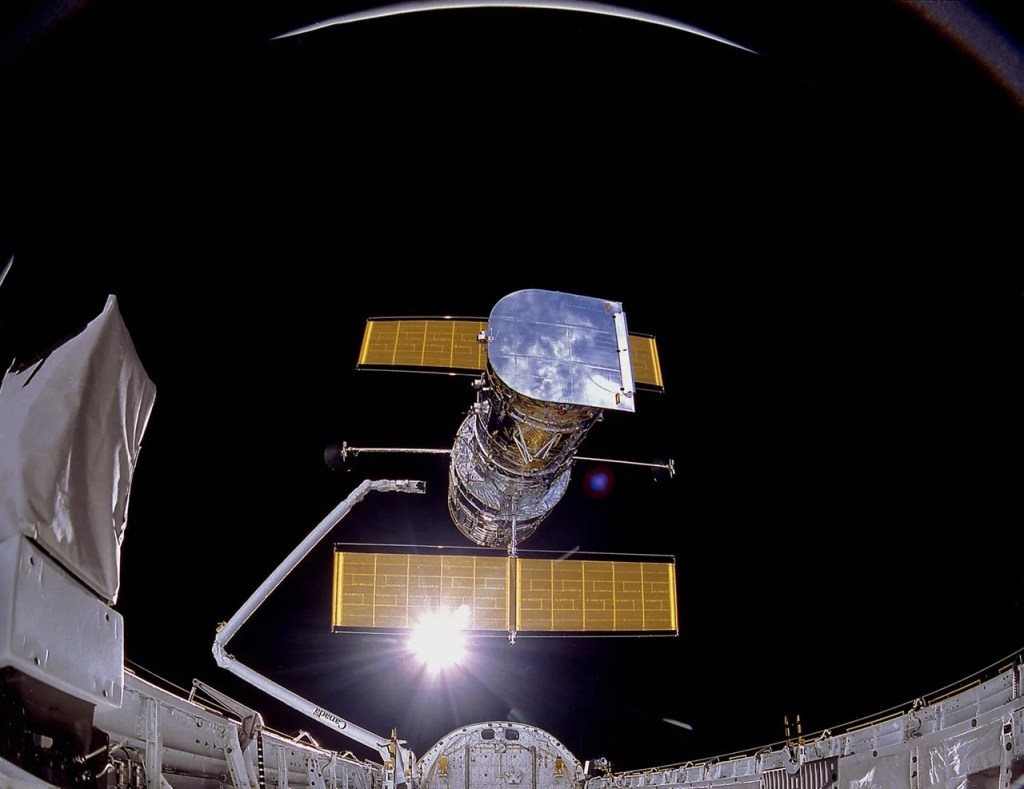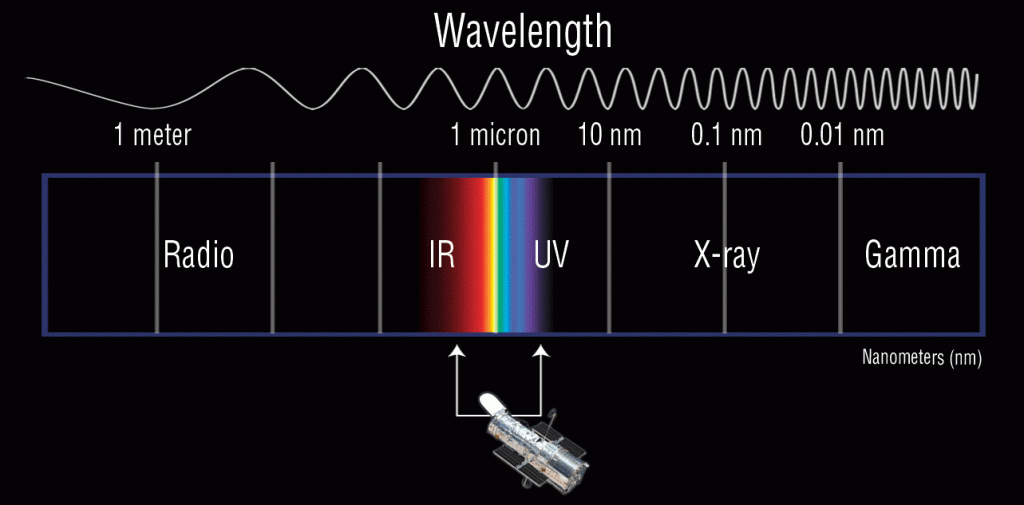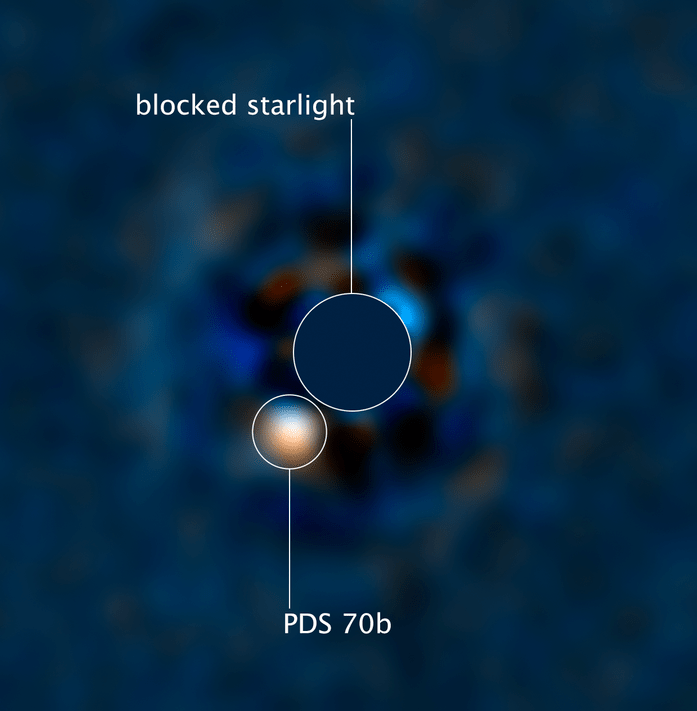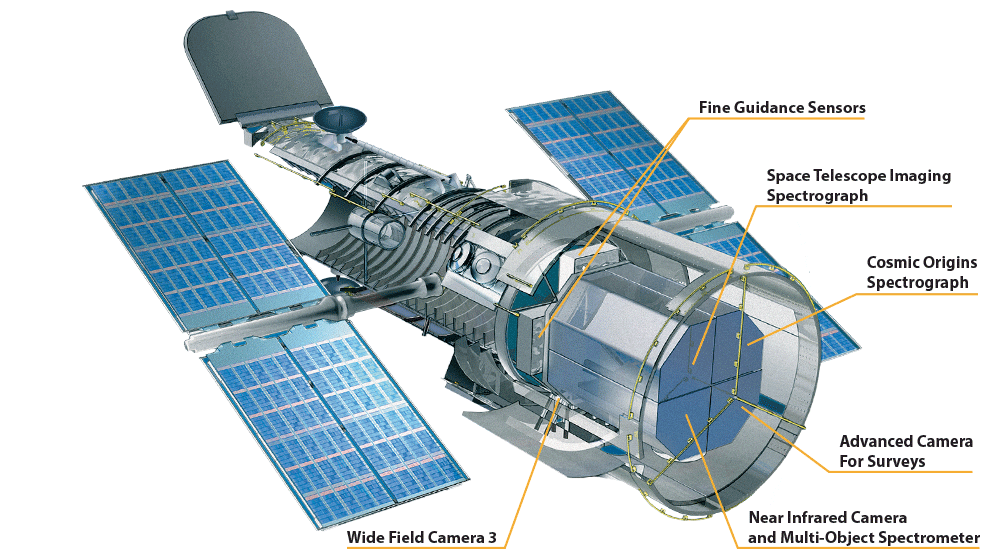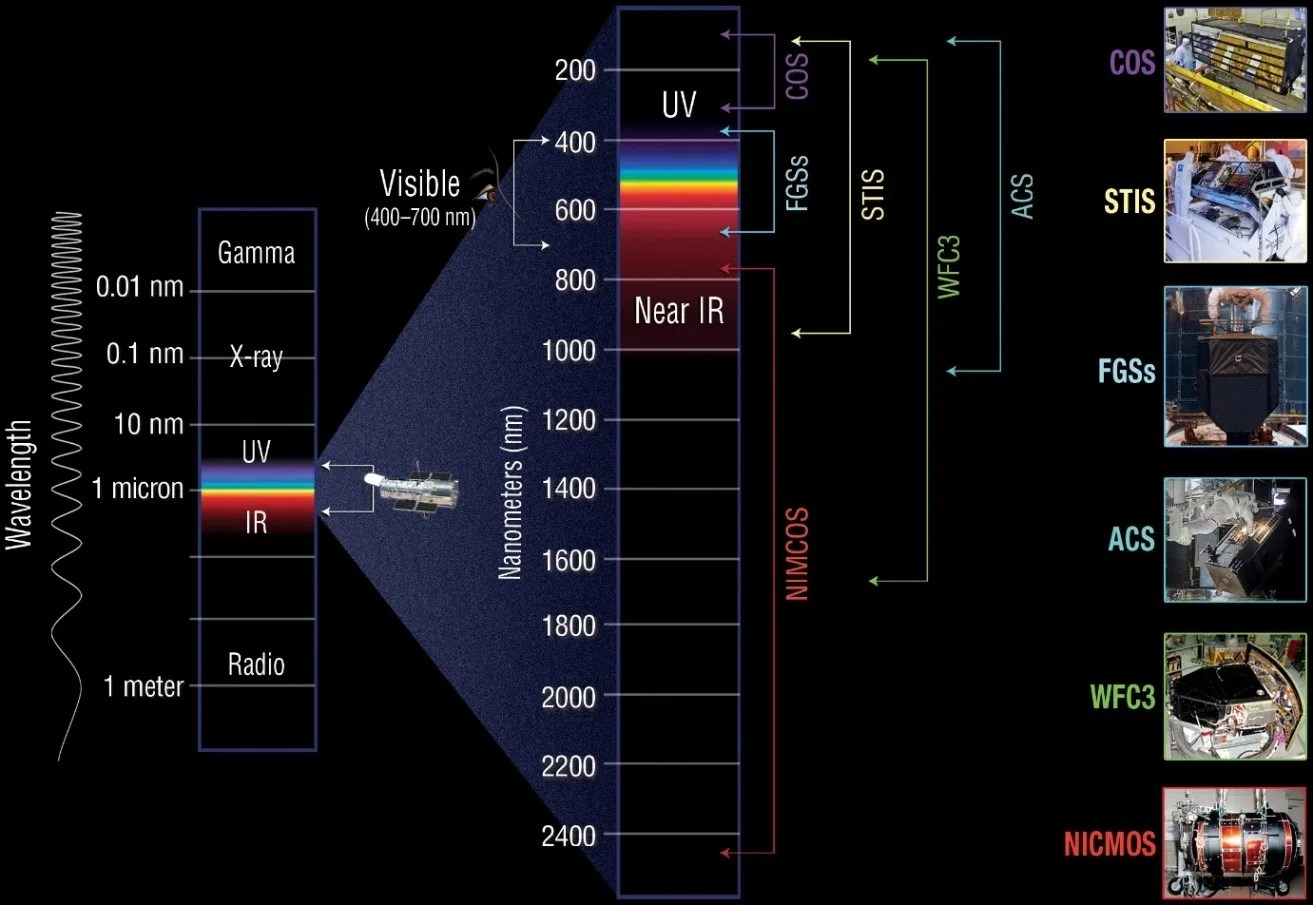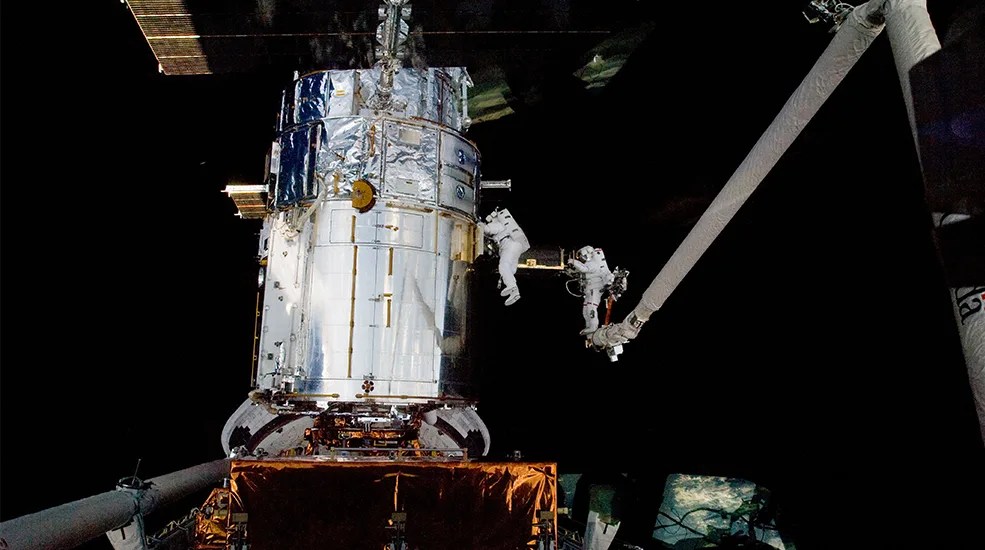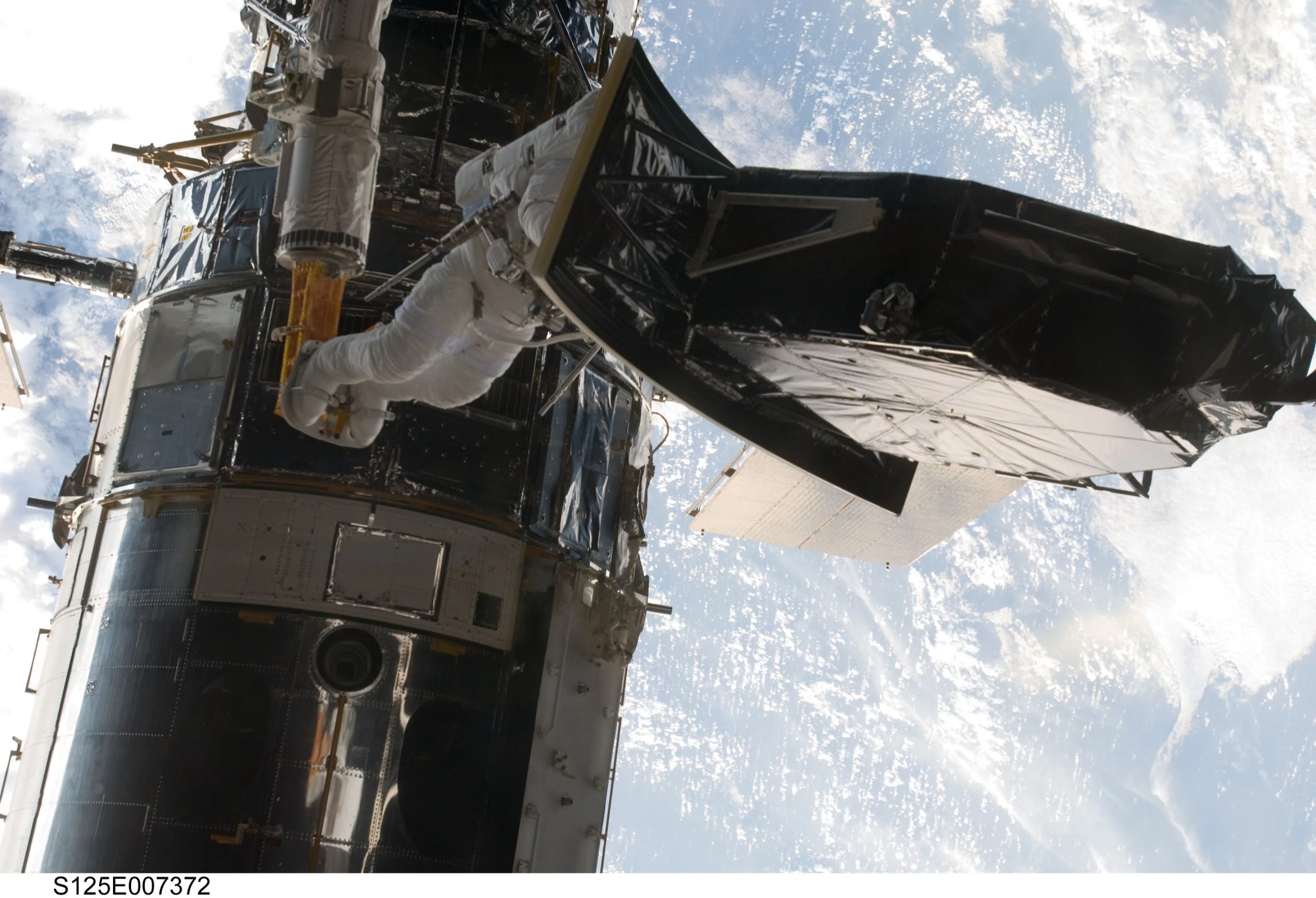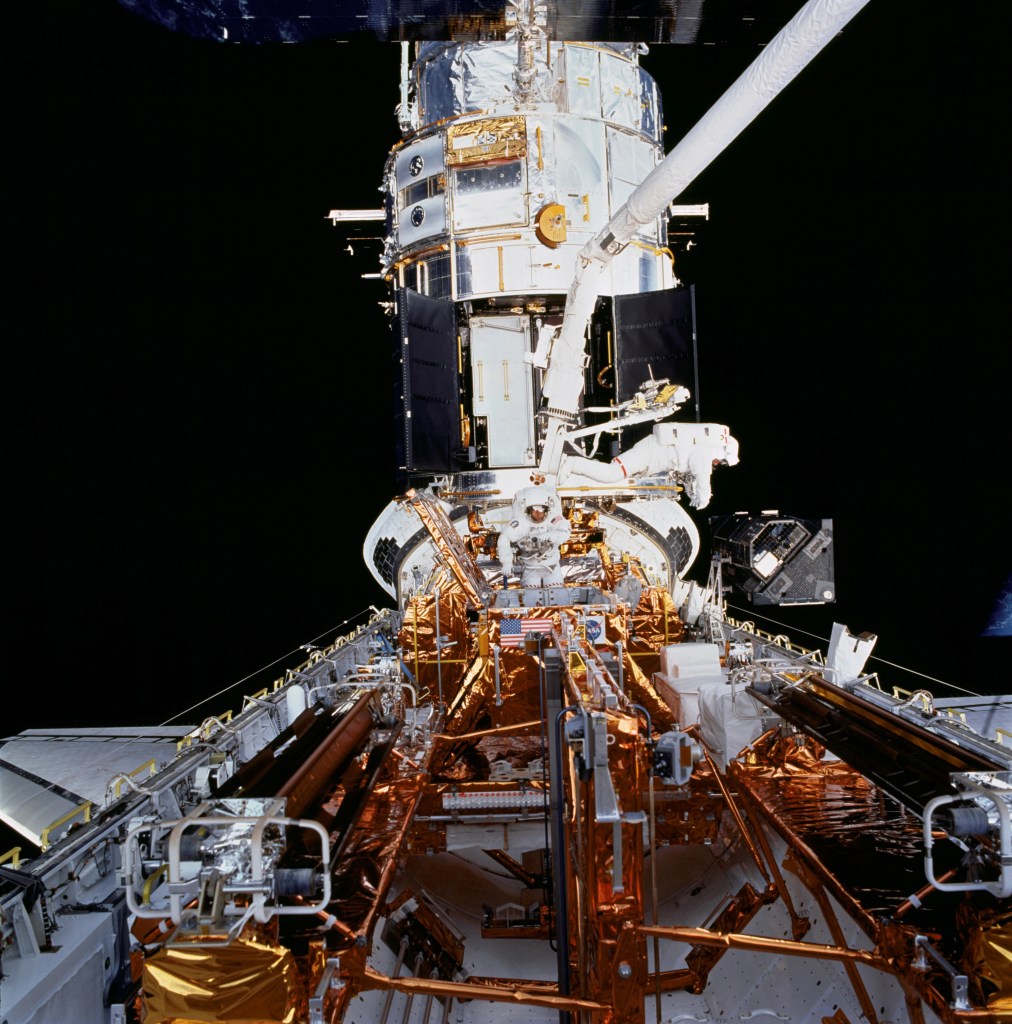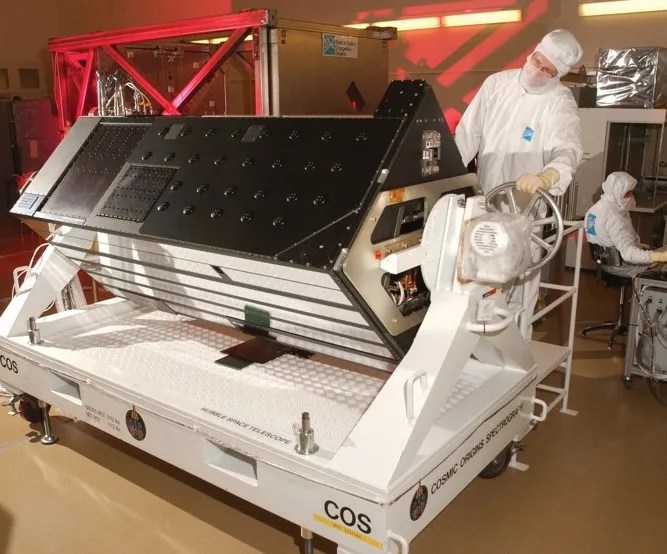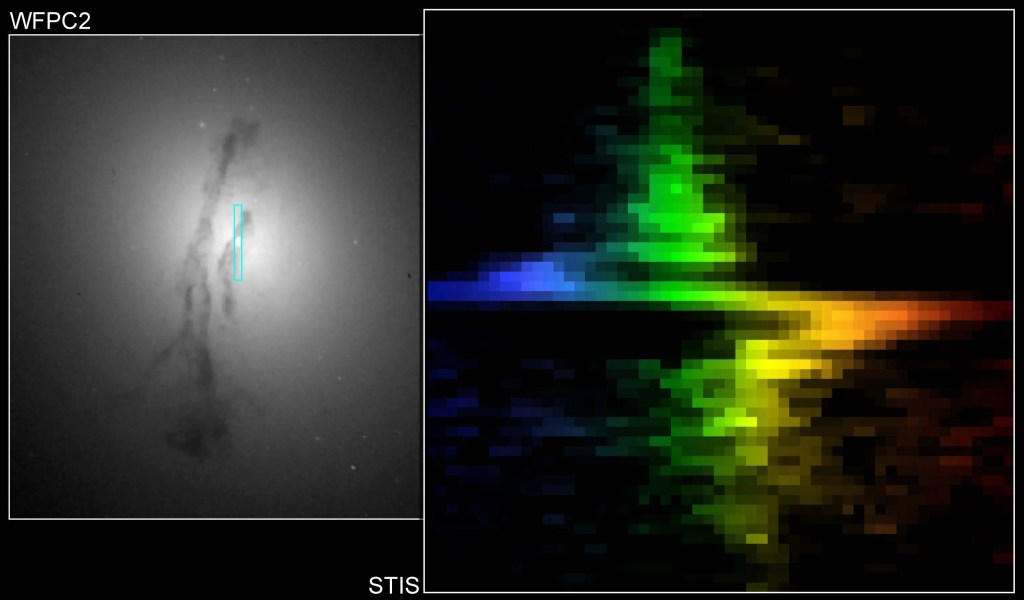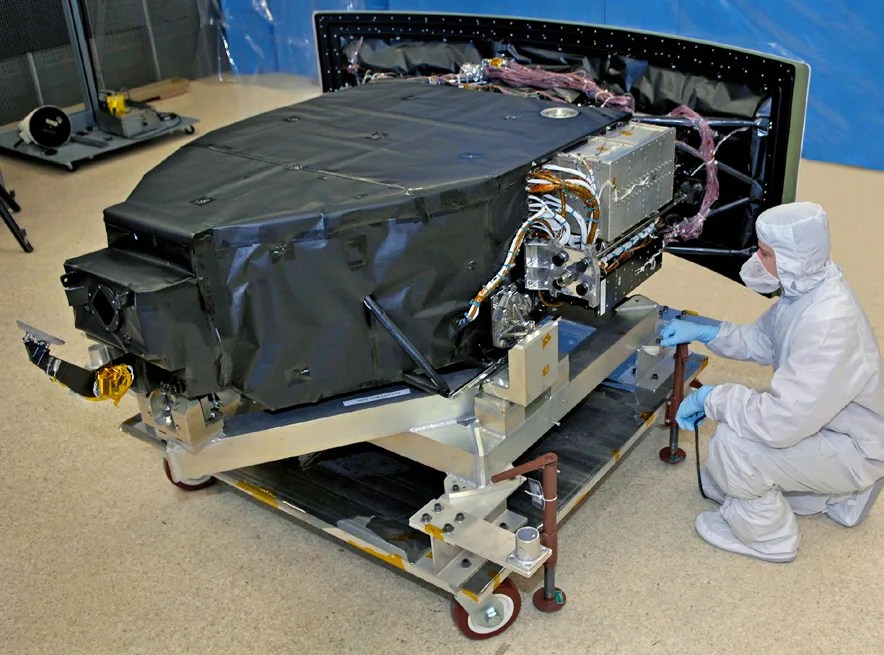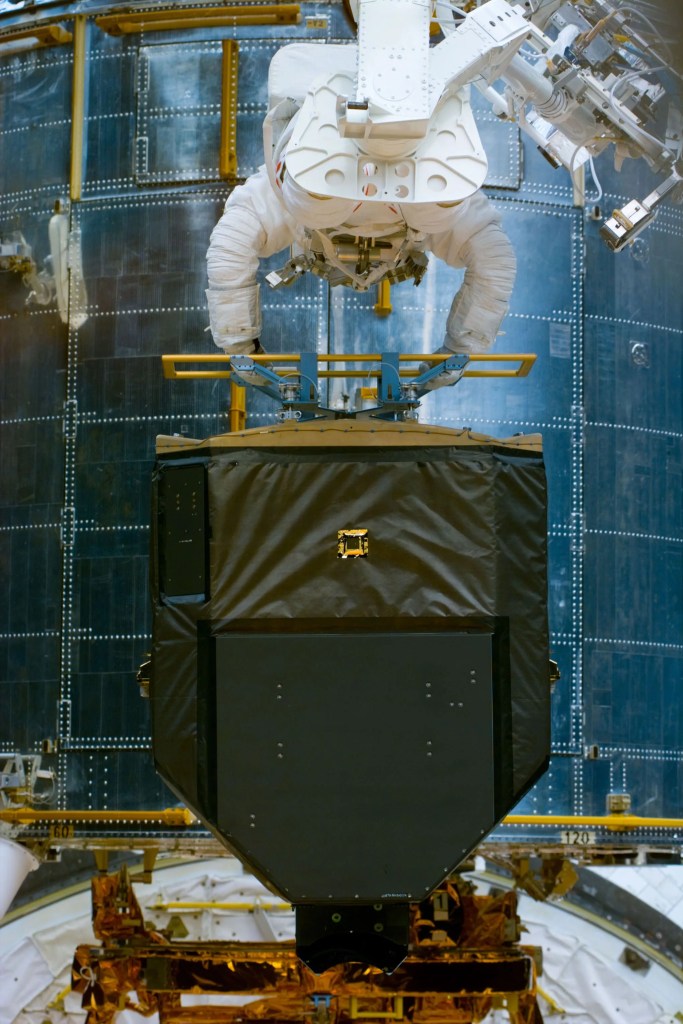Instruments
Hubble's scientific instruments are the tools that bring us stunning images and ground-breaking discoveries.
Quick Facts
The Hubble Space Telescope has three types of instruments that analyze light from the universe: cameras, spectrographs, and interferometers.
Cameras
Hubble has two primary camera systems to capture images of the cosmos. Called the Advanced Camera for Surveys (ACS) and the Wide Field Camera 3 (WFC3), these two systems work together to provide superb wide-field imaging over a broad range of wavelengths.
Installed on Hubble in 2002, ACS was designed primarily for wide-field imagery in visible wavelengths, although it can also detect ultraviolet and near-infrared light. ACS has three cameras, called channels, that capture different types of images. An electronics failure in January 2007 rendered the two most-used science channels inoperable. In 2009, astronauts were able to repair one of the channels and restored ACS’s capacity to capture high-resolution, wide-field views.
Installed in 2009, WFC3 provides wide-field imagery in ultraviolet, visible and infrared light. WFC3 was designed to complement ACS and expand the imaging capabilities of Hubble in general. While ACS is primarily used for visible-light imaging, WFC3 probes deeper into infrared and ultraviolet wavelengths, providing a more complete view of the cosmos.
Spectrographs
Spectrographs practice spectroscopy, the science of breaking light down to its component parts, similar to how a prism splits white light into a rainbow. Any object that absorbs or emits light can be studied with a spectrograph to determine characteristics such as temperature, density, chemical composition and velocity.
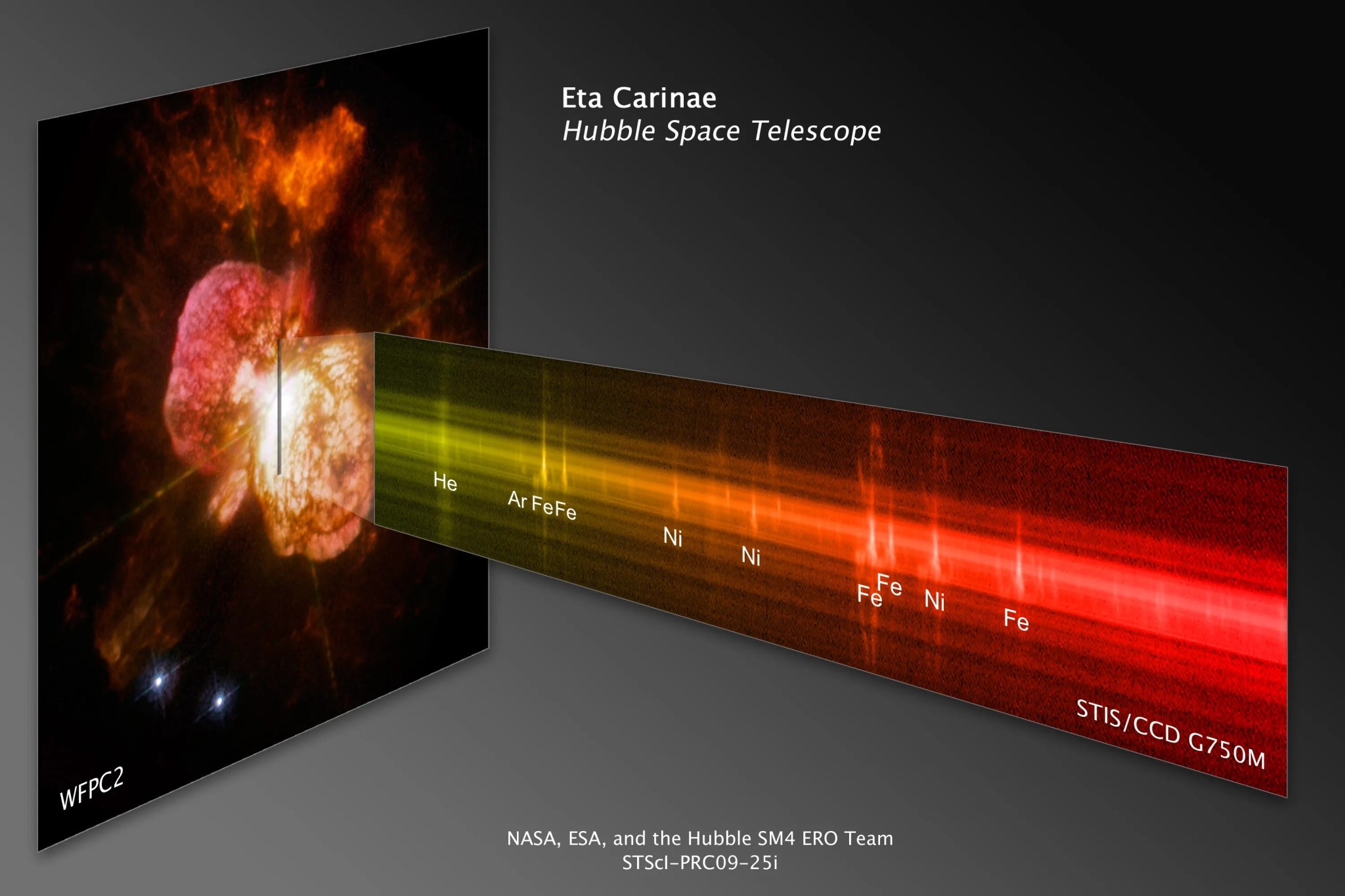
Hubble currently utilizes several spectrographs including the Cosmic Origins Spectrograph (COS) and the Space Telescope Imaging Spectrograph (STIS). COS and STIS are complementary instruments that provide scientists with detailed spectral data for a variety of celestial objects. While STIS is a versatile, “all purpose” spectrograph that handles bright objects well, COS measures exceedingly faint levels of ultraviolent light emanating from distant cosmic sources, such as quasars in remote galaxies. Wide Field Camera 3 also has spectrographic capability and is often used in the study of exo-planet atmospheres. The Advanced Camera for Surveys and the Near Infrared Camera and Multi-Object Spectrometer (which currently serves as a backup) have their own set of spectrographic capabilities. Working together, these spectrographs provide a full set of spectroscopic tools for astrophysical research.
Interferometers
Hubble’s interferometers serve a dual purpose – they help the telescope maintain a steady aim and also serve as a scientific instrument. The three interferometers aboard Hubble are called the Fine Guidance Sensors. The Fine Guidance Sensors measure the relative positions and brightnesses of stars.
When Hubble is pointing at a target, two of the three Fine Guidance Sensors are used to lock the telescope onto the target. For certain observations, the third Fine Guidance Sensor can be used to gather scientific information about a target, such as a celestial object’s angular diameter or star positions that are ten times more accurate than those obtained by ground-based telescopes.
The Fine Guidance Sensors are very sensitive instruments. They seek out stable point sources of light (known as “guide stars”) and then lock onto them to keep the telescope pointing steadily. When a light in the sky is not a point source, the Fine Guidance Sensor cannot lock on and so it rejects the guide star. Often, a rejected guide star is actually a faraway galaxy or a double-star system. Since Hubble was launched in 1990, the Fine Guidance Sensors have detected hundreds of double-star systems that were previously thought to be single stars.
Past Instruments
Only one of the instruments remaining on Hubble – the third Fine Guidance Sensor – was launched with the observatory in 1990. The rest of the instruments were installed during Hubble’s five servicing missions. In addition to installing new instruments, astronauts also repaired two instruments (ACS and STIS) while visiting Hubble on Servicing Mission 4 in 2009. The Near-Infrared Camera and Multi-Object Spectrometer (NICMOS) on Hubble is in hibernation following a cryocooler anomaly, but most of its infrared duties have since been taken over by WFC3.
Hubble’s past instruments include:
- High Speed Photometer
- Faint Object Camera
- Faint Object Spectrograph
- Goddard High Resolution Spectrograph
- Wide Field and Planetary Camera
- Wide Field and Planetary Camera 2
Current Instruments
Advanced Camera for Surveys (ACS) – ACS is a third-generation imaging camera. This camera is optimized to perform surveys or broad imaging campaigns.
Cosmic Origins Spectrograph (COS) – COS focuses exclusively on ultraviolet (UV) light and is the most sensitive ultraviolet spectrograph ever, increasing Hubble's sensitivity at least 10 times in the UV spectrum and up to 70 times when looking at extremely faint objects. It is best at observing points of light, like stars and quasars.
Space Telescope Imaging Spectrograph (STIS) – STIS is a second-generation imager/spectrograph. STIS is used to obtain high-resolution spectra of resolved objects and has the special ability to simultaneously obtain spectra from many different points along a target.
Wide Field Camera 3 (WFC3) – Wide Field Camera 3 is the main imager on the telescope. It has a camera that records visible and ultraviolet (UV) wavelengths of light and is 35 times more sensitive in the UV wavelengths than its predecessor, Wide Field and Planetary Camera 2. A second camera that is built to view infrared (IR) light increases Hubble's IR resolution from 65,000 to 1 million pixels. Its combination of field-of-view, sensitivity and low detector noise results in a 15-20 time improvement over Hubble’s previous IR camera.
Fine Guidance Sensor (FGS) – The FGS provides pointing information for the spacecraft by locking onto guide stars. The FGS can also function as a scientific instrument by precisely measuring the relative positions of stars, detecting rapid changes in a star’s brightness, and resolving double-star systems that appear as point sources even to Hubble’s cameras. Hubble has three FGSs.
Near Infrared Camera and Multi-Object Spectrometer (NICMOS) – NICMOS has the ability to obtain images and spectroscopic observations of astronomical targets at near-infrared wavelengths. Although NICMOS is currently inactive, most of its functionality is replaced by Hubble’s other science instruments.




























